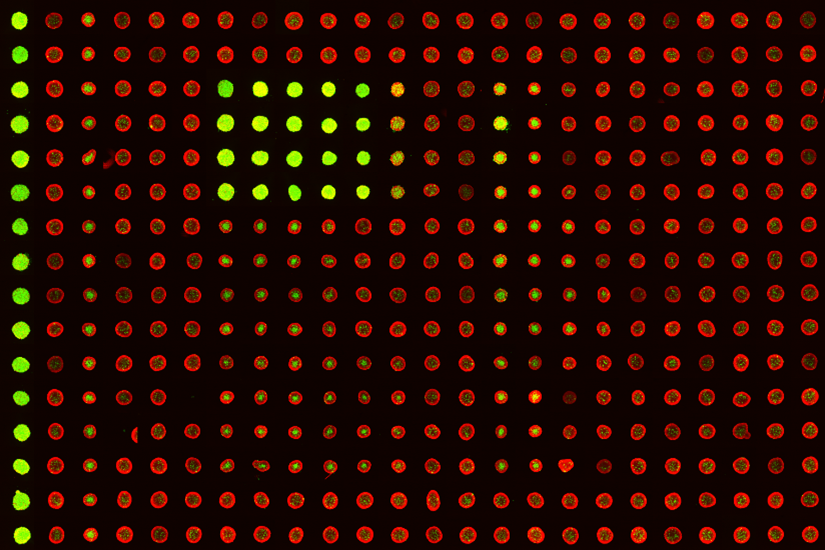3D brain organoids stained for Hoechst, neuronal, and stem cell markers.
Our scientists have developed 3D co-cultures that can be used as a phenotypic HCI screening system to study invasive processes in multicellular tumor models. We are one of the few screening laboratories in the world that can measure, analyze, and quantify invasion processes in high-throughput phenotypic models to test anti-invasive agents in vitro.
Our scientists have successfully adapted the organoid technology for a range of indications to be handled in 384-well plates, making them HTS-compatible. Using our advanced image analysis algorithms, we can identify agents that significantly prevent the development of a disease-relevant phenotype.

Kidney oganoid in 384-well plate format to model polycystic kidney disease.
We established the following 3D HCA assays:
-
Tumor Spheroids 3D HCS
- Multiplexed, HTS-compatible
- Predictive in vitro evaluation of compound efficacy for oncology
- Work published in
Wenzel, C., et al., 3D high-content screening for the identification of compounds that target cells in dormant tumor spheroid regions. Exp. Cell. Res (2014)
Klutzny, S., et al., Functional inhibition of acid sphingomyelinase by Fluphenazine triggers hypoxia-specific tumor cell death. Cell. Death Dis. (2017)
Vriens, K., et al., Evidence for an alternative fatty acid desaturation pathway increasing cancer plasticity. Nature (2019)
Peirsman, A., et al., MISpheroID: a knowledgebase and transparency tool for minimum information in spheroid identity. Nature Methods (2021)

-
Organoids HCA
- Multiplexed, HTS-compatible
- Evaluation of organoid biology
- Assay development ongoing for several indication

High-throughput capable iPSC derived organoids grown on 384W plates for > 6 weeks. Organoids are viable as shown by Hoechst (blue) and SYTOX green (green) staining.



